How to fix a car fan
The Video Course teaches you everything about modern cars.
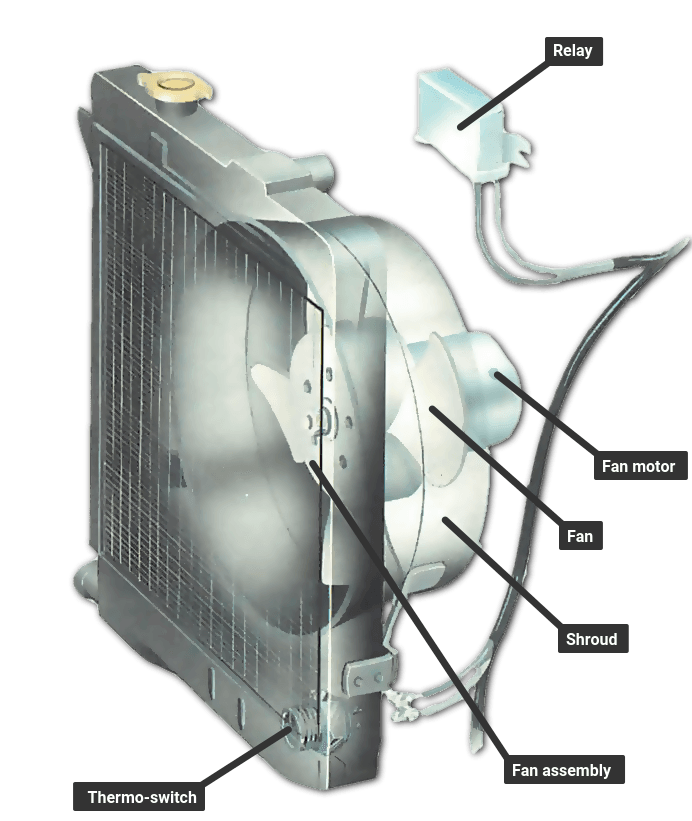
Electric radiator-fan motors are switched on either by the ignition switch - and run while the engine is working - or by a thermostatic switch .
Thermostatically controlled motors do not work the fan until the engine coolant rises above normal operating temperature, and then switch off when it has cooled down again.
To check that the fan is working, listen for it cutting in and out, and watch the temperature gauge .
If the engine shows signs of overheating, stop and look to see if the fan is working. With the type operated by the ignition switch, keep the engine running.
Where there is a thermostatic switch in the circuit , start the car and let it run at fast idle. With no airflow through the radiator , it will soon warm up to the temperature at which the fan should cut in.
The assembly usually has only three components - fan motor, thermostatic (or thermo) switch, and relay . If the fan is not working, these units or the wiring to them may be at fault.
Checking the circuit and motor for faults

Look at the fuse box for a blown fuse. If the fuses are intact, switch on the ignition and use a circuit tester to find if there is current at the motor terminals .
Alternatively, connect the feed terminal on the motor direct to the battery positive terminal if the motor is fed via a thermo-switch.
In either case, if there is a current at the motor, the motor is at fault.
If the thermo-switch does not operate, the earthing point of the circuit may be faulty. Check that the earthing point is clean and tight. Check also the functioning of the thermo-switch.
Changing the fan motor
Disconnect the battery , and take off the wiring terminals to the motor or disconnect the plug. Free the wires from clips or other fixings on the fan shroud or nearby bodywork.
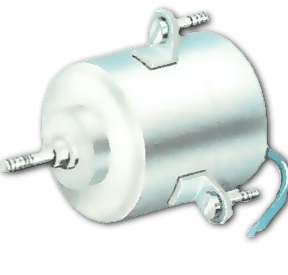
The motor and fan normally come off as an assembly, but you may also have to remove the shroud and sometimes the radiator.
Separate the components. Clean the parts that are to be reused, simply by degreasing or even by repainting.
Checking the new motor
When you fit a replacement motor, check it by connecting its leads directly to the battery. Be sure to connect the positive (+) and negative (—) leads to the corresponding battery terminals.
Take care — the motor will kick as it starts and there will be a large spark when it is connected.
Checking the switch for faults
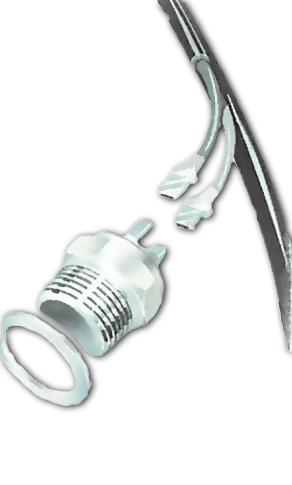
If the fan motor is not at fault, leave the ignition switched on, take the connections off the thermo-switch and briefly touch them together.
If the fan motor now works, the switch is faulty. If it does not, check to see that there is current flowing to the switch by using a circuit tester on the feed wire to the thermoswitch.
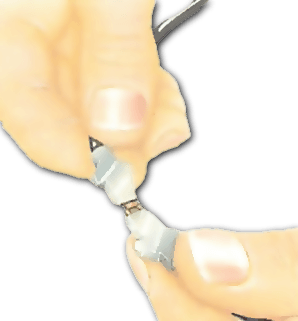
If the tester does not light, trace the lead from the thermo-switch back to its power supply; the car handbook may have a wiring diagram .
If the tester lights, trace the lead from the thermo-switch through to the relay and check the terminals for tightness and cleanliness. Clean and tighten as necessary.
Changing a thermo-switch
The thermo-switch is normally located in the radiator bottom tank, in the thermostat housing, or in the cylinder head .
To remove the switch, drain the radiator (See How to flush an engine radiator ) until the coolant is below the level at which it is fitted. Catch the coolant in a clean container if you plan to reuse it.
If a rubber cover is fitted over the back of the switch, ease it off, then disconnect the electrical connections.
The switch can now be unscrewed from its mounting point with an appropriate spanner. It may, however, be very tight, so take care not to distort the surrounding metal if it is fitted in the radiator bottom tank. Always fit a new sealing washer.
Checking the relay for faults
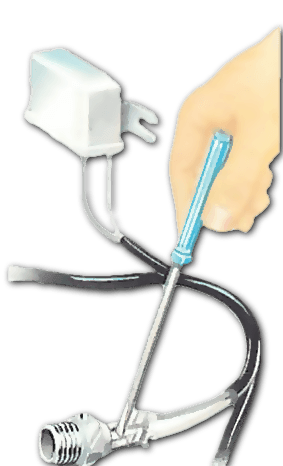
With the ignition switched on, short-circuit the thermo-switch by putting a screwdriver across its two terminals; do not disconnect the leads. You may be able to hear a click from the relay as it operates.
Test for current with a test lamp or circuit tester at the 'live' lead to the relay — again with the ignition switched on.
If there is current here but, when the thermo-switch is bypassed, none at the terminal for the fan-motor lead, the relay is faulty and must be replaced.
Checking the T-piece
The Ultimate Car Mechanics video course
Learn everything about modern cars from our new video series.
Learn more >-
We build a Mazda MX5 Miata from scratch
We start by tearing down and then rebuilding the whole car.
-
Every part explained
There's ridiculous detail on every part. Clearly and easily explained.
-
All modeled in 3D
We've created the most detailed 3D model ever produced so we can show you everything working.






